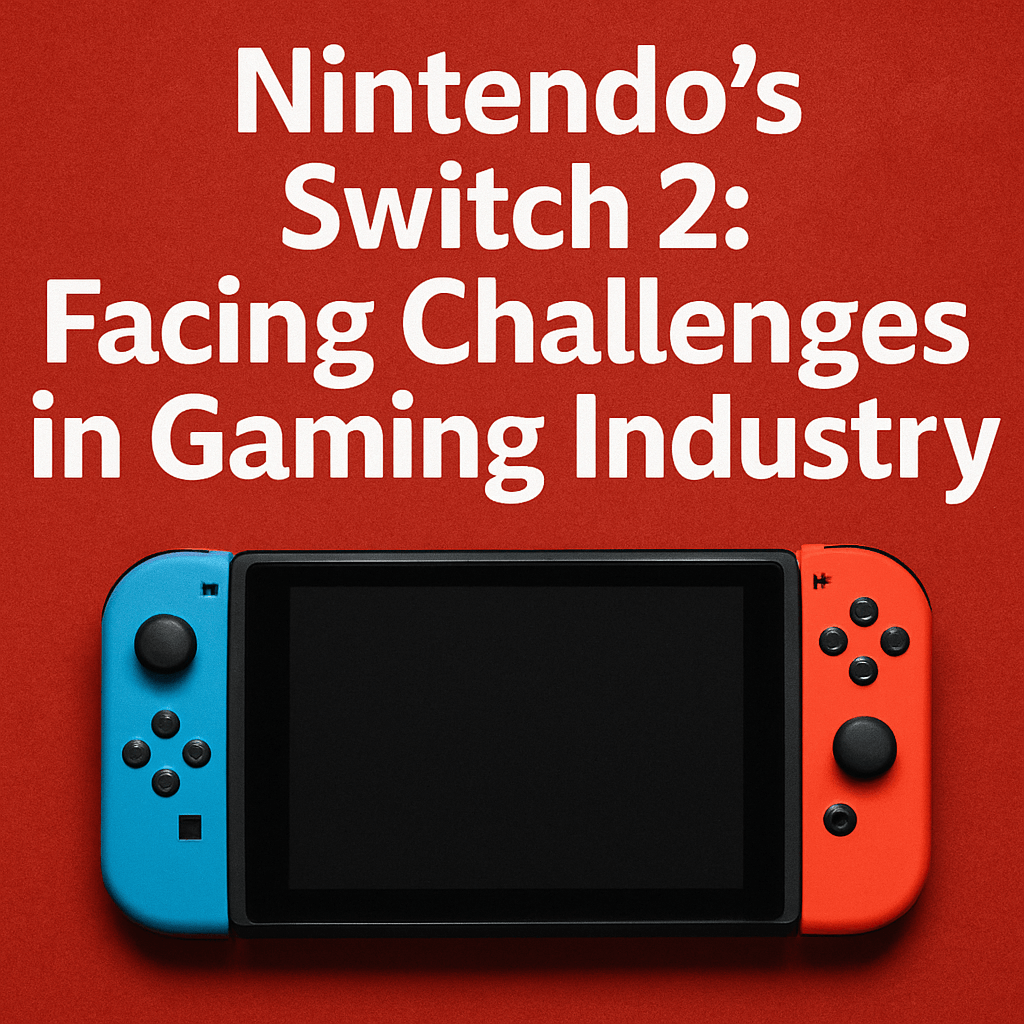Nintendo’s Switch 2: Facing Challenges in Gaming Industry

To gamers around the world, April 2—renamed “Liberation Day”—signified more than a holiday. In a polished prerecorded video presentation, Nintendo revealed the much-anticipated Switch 2, the successor to its blockbuster handheld console, the Nintendo Switch. This unveiling satisfied the cravings of ardent gamers with enhanced technical specifications, broader access to Nintendo’s extensive gaming catalog, along with exciting new titles in beloved franchises such as Mario Kart and Donkey Kong. Not even a surprise price increase from $300 to $450 diminished the community’s enthusiasm.
However, the launch set to take place on June 5 faced potential disruption from geopolitical issues. Hours after the reveal, former U.S. President Donald Trump announced a series of tariffs, including significant levies on imports from key manufacturing hubs in China, Vietnam, Japan, and Cambodia—regions crucial to Nintendo’s supply chain. This unexpected turn of events jeopardized plans that had been meticulously crafted over the past several years.
The Significance of the Switch 2
Nintendo’s stakeholders and analysts are keenly aware that the Switch 2 is vital for revitalizing the company’s standing in an increasingly competitive market. As gaming technology evolves rapidly, industry veterans like Jeff Gerstmann emphasize that Nintendo must offer something innovative to ensure longevity and continued creative output. “They need something new and exciting out in the marketplace that kicks that can down the road on the tech front for another decade,” he explains.
Initial Reactions and Market Response
Following Trump’s tariff announcement, Nintendo chose to pause U.S. pre-orders to gauge the implications. Within weeks, pre-orders reopened with the same price, but the company had to increase prices of several accessories, including controllers and amiibo figurines. This price adjustment reflects the heightened costs associated with producing goods amid fluctuating tariffs. Investors remain cautiously optimistic; Nintendo’s shares have seen record highs, maintaining a market valuation upwards of $90 billion, which ranks it as Japan’s eighth-most-valuable firm.
Navigating Supply Chain Challenges
As manufacturing strategies evolved, Nintendo was one of the first companies to shift production from China to Vietnam and Cambodia in 2019, pre-empting potential tariffs on consoles made in China. Insightful commentary from gaming analyst Daniel Ahmad highlights the significance of this move: “The majority of their production is still done in China, but they’ve now allocated U.S. console production to Vietnam,” putting Nintendo ahead compared to its primary competitors, Sony and Microsoft.
Amidst the evolving geopolitical landscape, Nintendo proactively advanced its shipments to avoid potential tariff implications. Research by JPMorgan suggested that Nintendo had enough inventory to meet demand for an extended period, estimated between six months to a year, potentially cushioning the impact of fluctuating tariffs.
Launch Strategy and Sales Expectations
Despite the price uptick, demand for the Switch 2 appears robust; pre-orders quickly sold out in major markets such as the U.S. and Japan, leading the company to apologize for forthcoming shortages. Notably, Nintendo is also introducing a budget-friendly version compatible solely with Japanese titles to mitigate potential resale challenges in regions where the console is not officially launched.
Looking ahead, the real benchmark will be how the Switch 2 performs during the crucial holiday shopping season when consumer buying habits are decisive. Industry experts ponder if the price point—still steep at $450—will deter potential customers. Gerstmann notes, “The big questions are around value—$450 is not a small amount of money.” Additionally, prices for games are projected to surge to $70-$80, escalating from the traditional $60 bracket, further complicating consumer buying decisions.
Impact of Tariffs on Future Sales
Nintendo’s management acknowledged the potential adverse effects of price hikes on sales forecasts. The company projected a conservative estimate of 15 million units sold in the first year, aligning closely with the Switch’s sales trajectory post-launch in 2017. In a recent briefing, Nintendo’s president, Shuntaro Furukawa, indicated that anticipated tariffs could translate to a profit diminishing by “several tens of billions of yen.” As negotiations surrounding tariffs fluctuate, any escalation beyond current levels could exacerbate pricing pressures.
The present environment, marked by a 30% tariff on China and 10% on other nations, poses challenges but remains manageable for Nintendo and other global businesses. Yet, should negotiations collapse or if Trump allows his 90-day tariff reprieve to lapse, the situation could devolve significantly, imposing harsh tariffs of up to 54% on Chinese goods.
Broader Implications for the Gaming Industry
The overarching predicament signals a larger trend within Trump’s trade policy, which pressures countries like Vietnam and Cambodia—popular “China plus one” destinations used for final assembly—to reduce reliance on Chinese manufacturing. Simultaneously, a surge in exports from these territories could complicate Trump’s broader goals to balance U.S. trade deficits.
Nintendo, and similar manufacturers, now find themselves balancing competitive pricing against a backdrop of escalating costs and tariffs. They will need to demonstrate acumen in navigating these volatile geopolitical landscapes, much like the strategic skills required in their gaming environments.
“The true essence of Nintendo’s challenge lies in its ability to adapt to a dynamically shifting global market while maintaining its brand integrity.”
This article appears in the June/July 2025 issue of Fortune with the headline “Game On!”
Conclusion
In summary, while the Switch 2’s early indicators suggest a successful launch, its longevity and potential in the market will invariably depend on how Nintendo maneuvers through the complex, evolving challenges posed by international trade dynamics and consumer expectations. The coming months will be crucial in determining both the console’s reception and the broader implications for the video gaming industry in an era increasingly defined by tariffs, trade negotiations, and strategic supply chain shifts.
Source: fortune